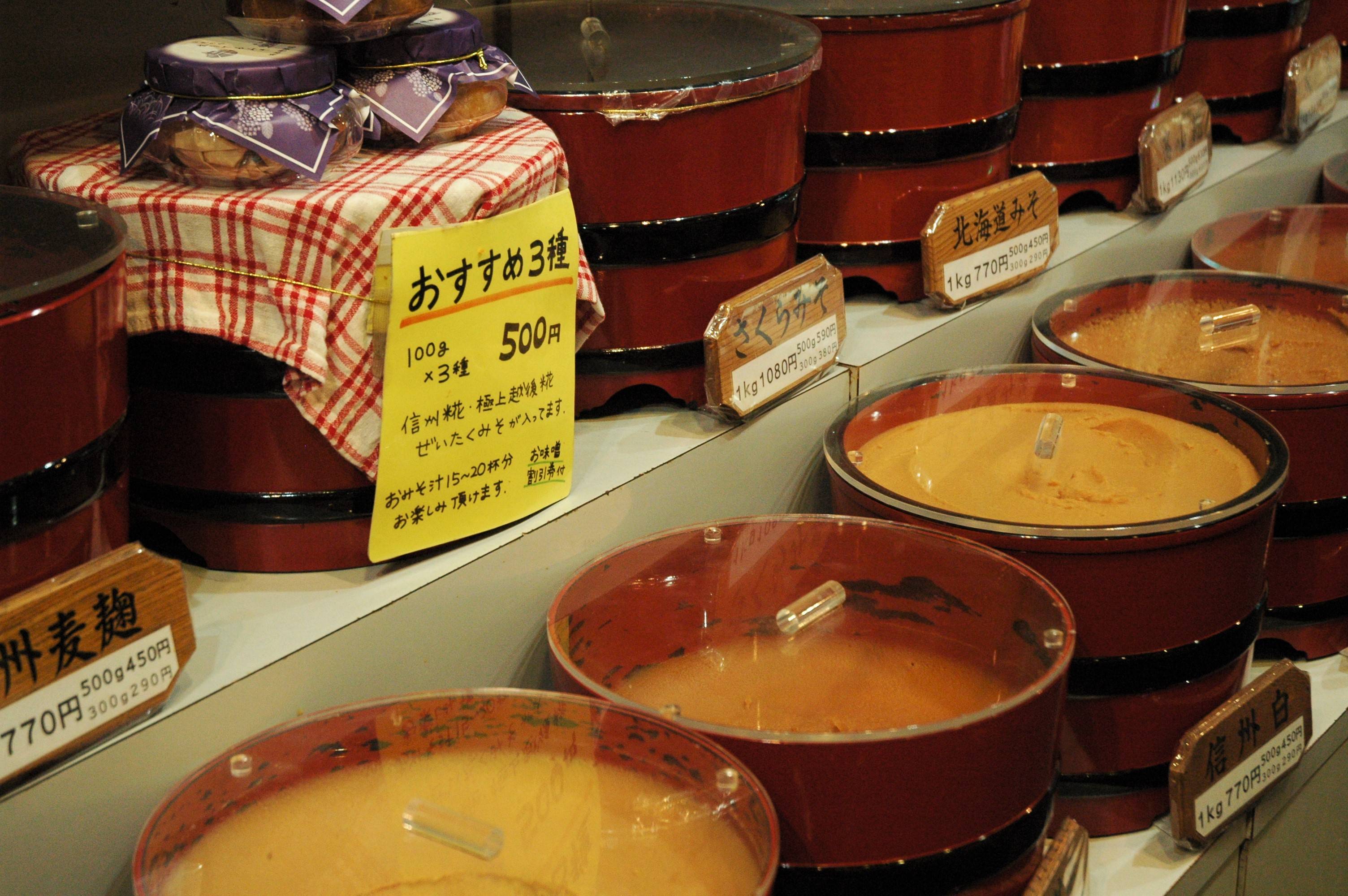Better known to the world at large as miso soup, miso shiru is a ubiquitous part of Japanese cuisine. Served at very top-end and most down-home establishments alike, offered alongside in-flight meals aboard Japanese airlines, sold at supermarkets in various instant forms (since 1974), and generally disseminated throughout the country, miso shiru is, in every sense of the word, a staple.
Beyond the usual suspects found swimming in the soup — wakame, cubes of kinu (silken) tofu, thin strips of abura-age (deep-fried tofu) and sliced negi (scallions) — a wealth of variety exists and not only in these accoutrements. Dozens upon dozens of prized regional forms exist: Hatcho miso, hailing from Okazaki, Aichi Prefecture; light, white Shinshu miso originating in Nagano Prefecture; and Tokyo’s own ama (sweet) miso, just to name a few. Different ways of serving the soup also abound, with dishes ranging from hiyajiru, a chilled preparation native to Miyazaki Prefecture, to the hearty, veggie-packed kenchinjiru, a gift from shо̄jin ryо̄ri (Buddhist vegetarian cuisine).
The origins of miso are as hazy as the soup itself. On one hand, archaeological traces of salt-preserved pastes in Japan have dated miso-adjacent foodstuffs to the late Jomon Period (10,000-200 B.C.), but these once-edible artifacts are perhaps too distant to be an ancestor of miso proper.


















With your current subscription plan you can comment on stories. However, before writing your first comment, please create a display name in the Profile section of your subscriber account page.